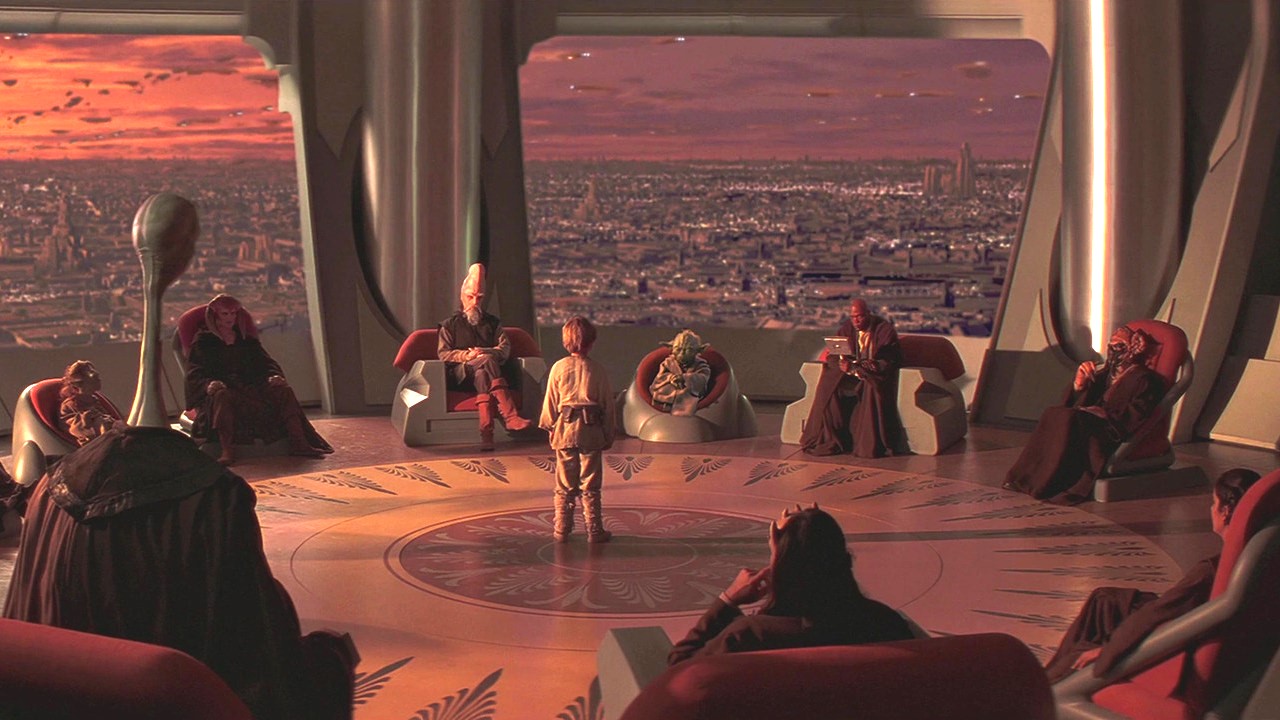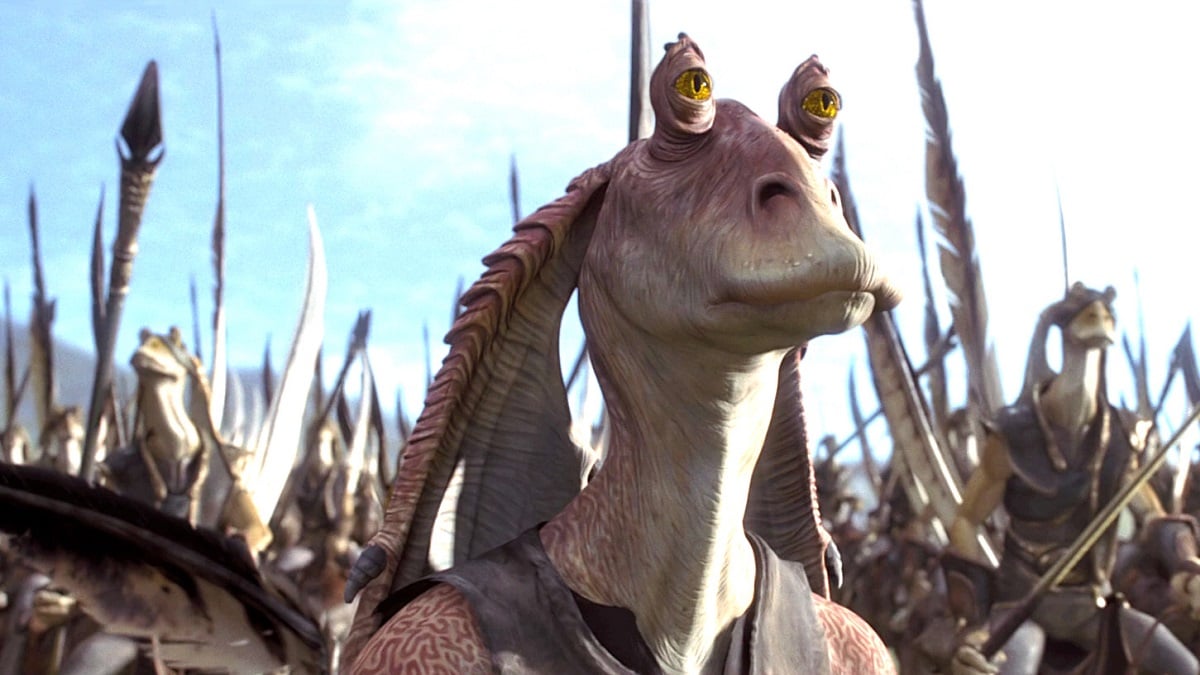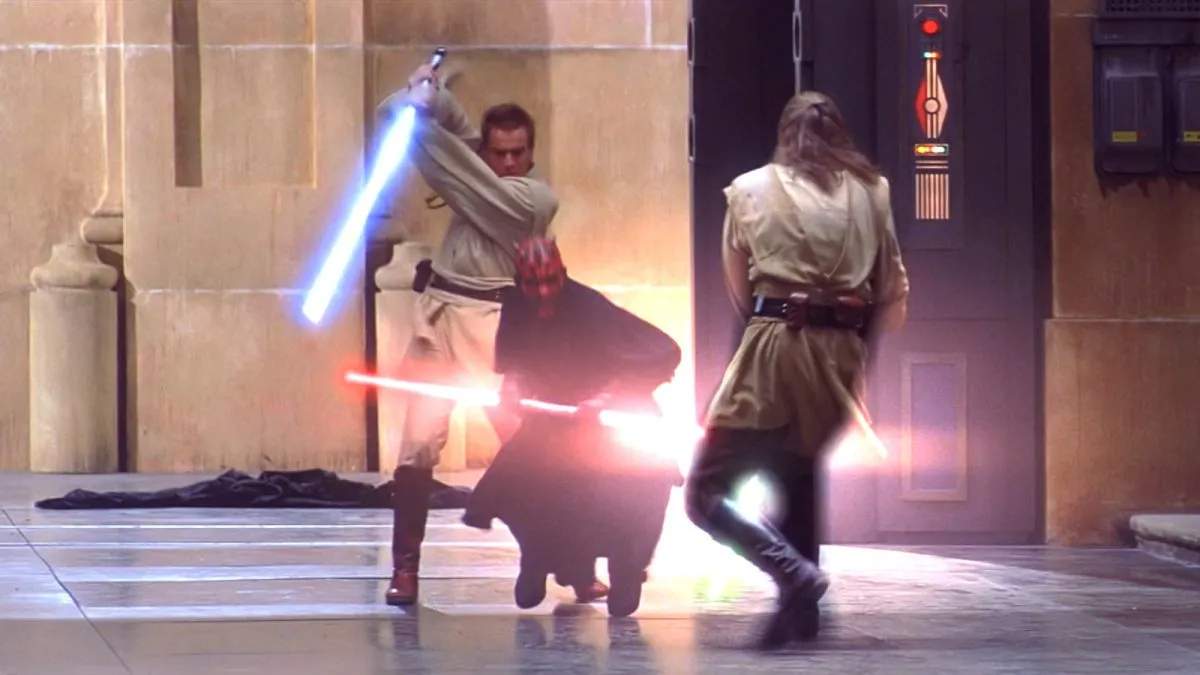To say Star Wars Episode I – The Phantom Menace was released in 1999 to massive hype would be a galactic understatement.
It was the franchise’s first feature since 1983’s Return of the Jedi, and as some fans may recall, these were the caveman days when content wasn’t being churned out regularly on a streaming platform. In the ’90s, one of the only things die-hard fans had to indulge in was the incredible Thrawn novel trilogy by Timothy Zahn. (Some argue that the success of the books was a catalyst in getting George Lucas to start the prequels.)
After its colossal release, The Phantom Menace was peppered with lukewarm reviews; while some critics defended and praised the film, many lambasted it, and believed it to be an unworthy successor to the original movies, and Star Wars‘ legacy overall. In fact, its notoriety was so strong amongst fans that years later, Red Letter Media created a series of mega-popular videos criticizing the movie. (The seven-part series amassed millions of views, and helped popularize the video essay critique on YouTube.)
Today, on Rotten Tomatoes, Phantom Menace still remains one of the lowest-rated projects in the Star Wars franchise. So, let’s get into it: was Episode I really that bad of a movie?
Star Wars: Episode I – The Phantom Menace has a surprisingly linear and compact narrative

For all the flack Episode I gets, the movie has a tight and straightforward storyline. The plot begins with Qui-Gon Jinn and Obi-Wan Kenobi meeting with the Trade Federation, things go south, and then they have to improvise on Naboo. After saving the princess, they are forced to land on Tatooine where they meet Anakin Skywalker. Things get political on Coruscant, more on that later, and back on Naboo fans get to witness the first true Jedi-Sith clash. All of these events are portrayed pretty concisely, almost like levels on a video game.
Overall, it tells the story it needs to tell, albeit in a very linear manner. Sure, the Tatooine scenes are a bit sluggish, but everything Episode I needs to convey, it does. The Republic is constantly shown struggling at doing its job, the Jedi are shown at their prime and their skill is far greater than anything displayed in the original movies, and we get to see Anakin’s story begin from a young boy.
Episode I‘s story was blunt, but it was very different from New Hope, which is good. It gave viewers a completely unique galaxy to what was portrayed in the original trilogy. Simply put, no matter what story Phantom Menace told, the hype was just too off the charts. Nothing could have satisfied the fandom in 1999. Nothing.
The Phantom Menace portrays a complicated and absurdly bureaucratic political system

The Phantom Menace begins with a very political opening crawl. Whereas New Hope briefly and ambiguously mentions a faraway Senate, Episode I directly tackles the galaxy’s political framework. An inept governing body beginning to crumble was depicted wonderfully. Sure, discussions over trade routes and taxation debates aren’t exactly thrilling, but they were necessary story components.
The original trilogy adeptly portrayed a good versus evil conflict that engulfed the galaxy. However, the final antagonist was an all-powerful Emperor who ruled over everything. This simplifies things. This isn’t bad; that’s exactly the type of political framework the story required. This was the proper setting for Luke Skywalker‘s character arc to shine. He was the humble farmboy turned heroic rebel. The galaxy’s politics didn’t need to be explored deeply in this context.
For the introduction to the rise and fall of Anakin Skywalker, however, something more complex is needed, and that’s what The Phantom Menace gave us. The first prequel showcases just how corrupt and inefficient the Galactic Senate can be. While the people of Naboo are suffering and starving, the politicians on Coruscant are engaged in endless prattle and debate. Of course, Palpatine was maneuvering things from behind the scenes, but the Naboo crisis still displayed just how inefficient the Senate was at dealing with actual problems.
The Coruscant scenes also help viewers understand how massive the Republic and the Galaxy are. The world-building done in these moments sells the petty politics plaguing everything. The scenes also foreshadow the inevitable; if the Republic can’t handle a singular crisis like Naboo, what happens when something bigger arrives… like a colossal war?
The politics portrayed in set the stage for Anakin’s fall. The administrative quagmire that is the Republic’s government is the perfect setting for a young, angry, and brash Anakin to grow up in because he can witness all of its inefficiencies, leading him directly to Darth Sidious.
The hate for characters like Jar Jar Binks was completely overblown

The disdain thrown Jar Jar’s way after the film’s release was one of the most melodramatic fandom reactions ever seen. Ahmed Best played a very clumsy and talkative character who found himself falling into a galactic adventure – just like C-3PO.
Fans reacted like the original films didn’t have their own set of overly clumsy characters. How many times did Threepio interrupt the story’s heart by cutting into a dramatic scene? How about when a group of stuffed teddy bears took down the professional Imperial Army? Acting like Jar Jar was a new phenomenon unique to the prequels was preposterous.
The reaction to Jake Lloyd and his portrayal of young Anakinalso went entirely overboard. The actor, and the character, was a boy. Mark Hamill’s Luke Skywalker had some very corny dialogue in A New Hope. It’s only natural that Anakin, who was far younger than Luke, also had some.
Overall, the characters in Episode I were like any others: aimless people living in a galaxy far, far away who happen to get sucked into a mighty adventure.











Published: Oct 14, 2023 01:19 am